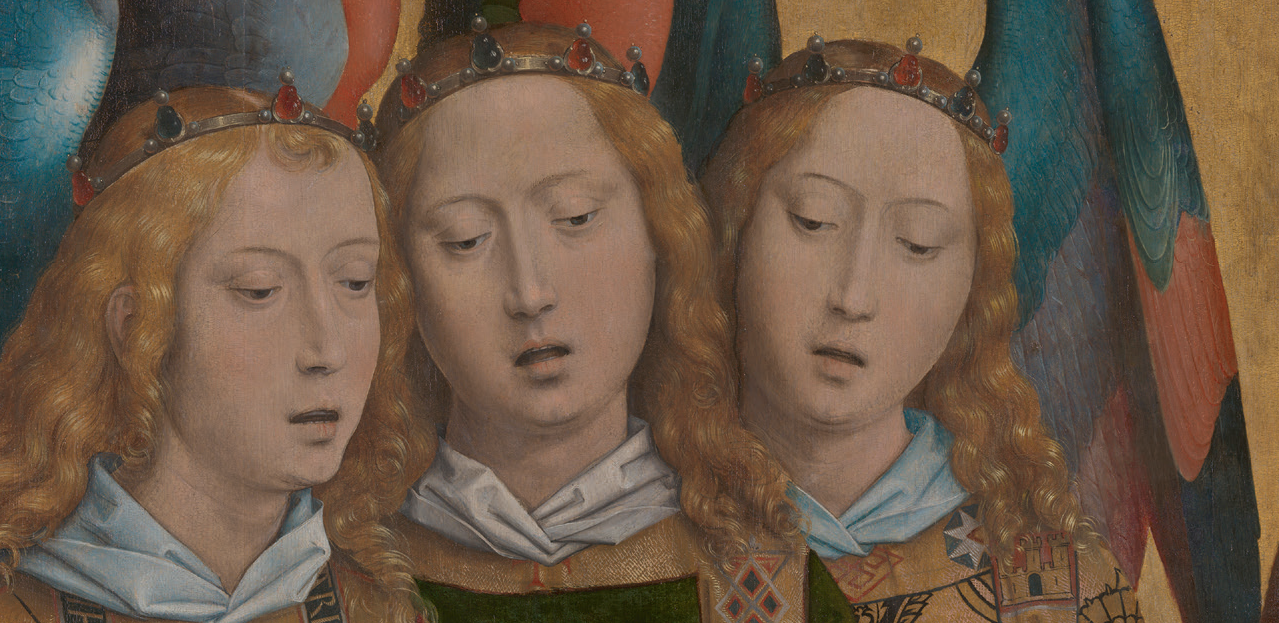
VOX\VOCES, monophonic\polyphonic puts the relationship between monophony and polyphony under a crystal lens. There is plenty to discover, because singers and composers have been inspired by monophonic melodies since the 12th century. The panorama of VOX\VOCES stretches all the way into the 17th century, covering more than 500 years of music and more than 30 generations of music makers!
Those who dig deep down into the riches of polyphony find astonishing foundations. After all, polyphonic constructions may be based on the most varied of melodies, from popular sing-along tunes to meandering Gregorian plainchant. Little folk tunes even turn up in polyphonic devotional hymns and complex, polyphonic masses, such as Jacob Obrecht’s Missa Scaramella. Yet liturgical hymns also lend themselves perfectly to disguise. Polyphonists often used Gregorian melodies as a cantus firmus: the ‘sturdy song’ upon or around which new voices were modelled. Now and then, a melody clearly shows its face before hiding again in the voices that surround it. At times that was cause for scepticism and disapproval. In the 16th century, this criticism bubbled all the way up into the highest echelons of the Church, with the Vatican threatening to ban polyphony. Fortunately, Giovanni Pierluigi da Palestrina was there with a mass of papal grandeur that turned him into the ‘saviour of polyphony’ and the paragon of the Italian High Renaissance.
So there is plenty for Laus Polyphoniae 2024 to get its teeth into: dozens of concerts that present a mouthwatering banquet of sound. This year, as ever, we have sought and found a perfect match between performers and repertoire. Exciting talents and fascinating figures of great eminence are eager to get to work with historical sources such as the Codex Calixtinus, the Basevi Codex and Heinrich Isaac’s most extensive work, the Choralis Constantinus. Big names like Huelgas Ensemble, Stile Antico, Cappella Pratensis and Vox Luminis stand shoulder to shoulder with young ensembles such as the Gesualdo Six and Diskantores. We focus proudly on Flemish talent with graindelavoix, Utopia and Dionysos Now! while putting the cream of the international early music scene in the spotlight, including Cut Circle (USA), Sollazzo Ensemble (FR/CH), PER-SONAT (DE), Binchois Consort (UK), Cantoría (ES) and AUXantiqua (AT).
VOX\VOCES is also a tribute to the interplay of performance practice and research that colours the very DNA of our festival. Researchers from Stanford (USA), Glasgow (UK), Linneaus (SE) and Leuven (BE) universities have explored the relationship between monophony and polyphony, stimulating the minds of ever-curious musicians. The Alamire Foundation, the international centre for the study of music in the Low Countries, has played a key role with The Sound of Music, a project that facilitates strategic basic research (FWO) into the link between Gregorian plainchant and polyphony in order to build new bridges between heritage and creation – from present-day music archaeology to contemporary sound installations.
Practical:
Consult the program books of previous editions